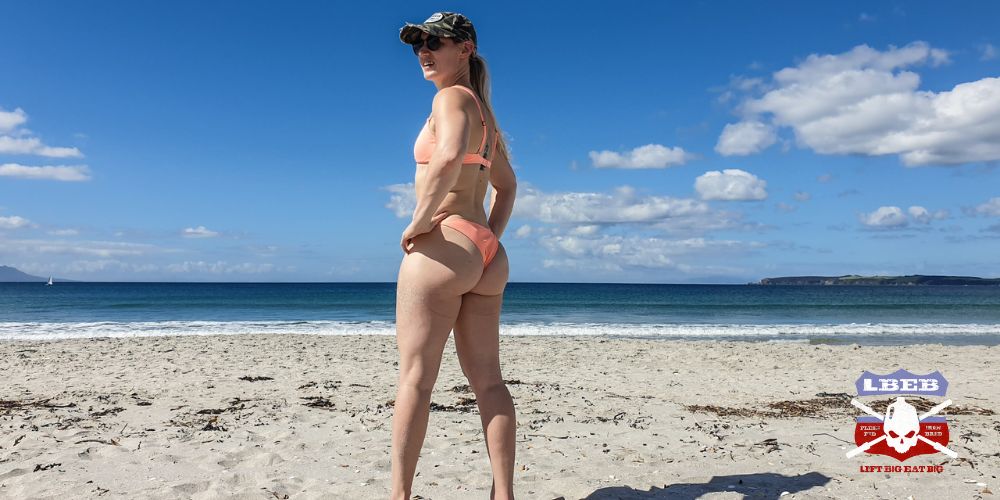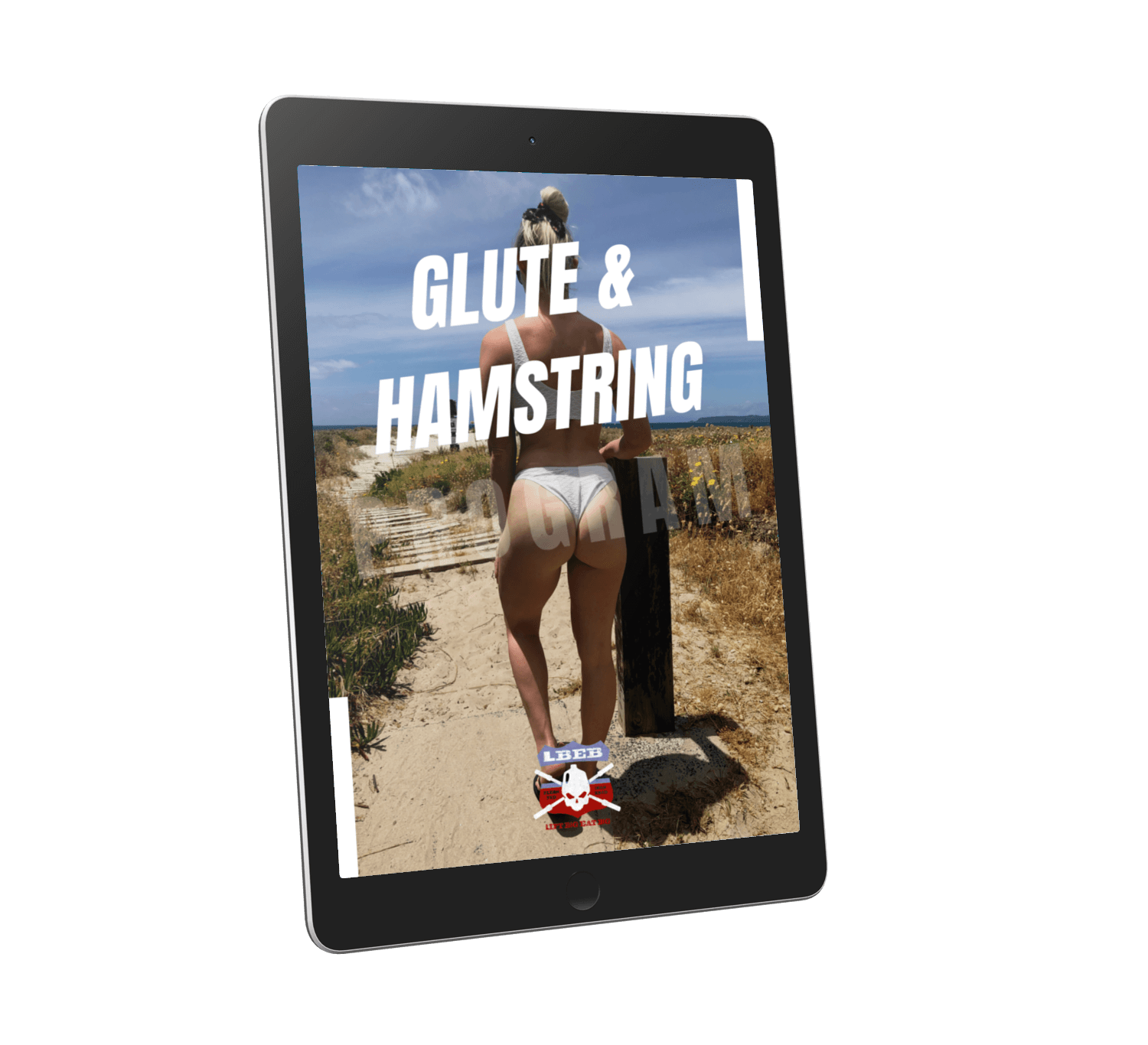Lunges are the most versatile lower body exercise. They can be performed in multiple directions and manipulated around niggling injuries. Further, they are absolutely brutal glute exercises when done heavy for high reps!
Lunges work the glutes tremendously – especially the walking and reverse lunge. Adding additional load when lunging is important as more load equals greater glute involvement.
Developing a bigger butt is not a painless process! So, here’s how you can use lunges to get you to a perky upper glute shelf.
Table of Contents
Do Lunges Work Glutes?
Lunges are an excellent exercise to work the glutes. The glutes undergo a loaded stretch eccentrically when stepping forward or backward as the hip flexes. This can be exaggerated with a slight forward lean or by elevating the front foot.
Interestingly, the walking lunge increases gluteus medius muscle activation [1]. This can be enhanced by holding a dumbbell in the opposite hand to the forward leg [2]. Further, the gluteus maximus, the largest butt muscle, needs load to “wake up.”
The contribution from the gluteus maximus when lunging increases as load increases [3]. Adding a 50% additional bodyweight load vs. 12.5% load resulted in a more significant hip contribution of 22.8% [4]. So don’t stick to bodyweight exercises and bands when lunging for the glutes. Rack a barbell on your back or hold dumbbells as you lunge.
Are Lunges Better Than Squats For Glutes?

Lunges and squats are both useful exercises for targeting the glutes. With the lunge performed one leg at a time, you add a stability component that activates the smaller glute muscles to align the knee when lunging.
Anecdotally, my glutes are most sore after performing lunges versus squatting. But that doesn’t mean you shouldn’t squat for glutes. One limitation with lunges is they aren’t suitable for lower rep ranges.
So, perform squats to allow heavier loads at lower rep ranges and lunges with light to moderate loads at higher rep ranges. Lifting over the entire rep range spectrum has been suggested to provide a better muscle-building stimulus [5].

What Lunges Are Best For Glutes?
For ultimate glute destruction, I prefer walking and reverse lunges. They provide the best feeling for the glutes working. With high reps, you’ll feel them during the set! For advanced lifters, try the front foot elevated reverse lunge.
This increases the range of motion as you get into deeper hip flexion, promoting a greater muscle-building stimulus for the glutes. Also, the more vertical you can keep your shin, the less the quads are involved and the more the glutes need to take over.
Another variation is the sliding reverse lunge. You can place furniture sliders under your toes of the leg stepping back. Instead of stepping, slide the foot back as you descend. It means you must pull with the glutes and hamstrings to bring the leg back into position.
Summary
If working your glutes is a priority, lunges should be a staple within your training. Typically, the forward and lateral lunge are the two variations I’d avoid if targeting the glutes. Instead, I opt for walking and reverse lunges. In my experience, they provide better glute targeting.
Grow Enormous Legs That Won’t Fit Your Jeans
A leg specialization program to bust through muscle growth plateaus and finally throw away those skinny jeans.
References
1. Stastny, P., Tufano, J. J., Lehnert, M., Golas, A., Zaatar, A., Xaverova, Z., & Maszczyk, A. (2015). Hip abductors and thigh muscles strength ratios and their relation to electromyography amplitude during split squat and walking lunge exercises.
2. Stastny, P., Lehnert, M., Zaatar, A. M., Svoboda, Z., & Xaverova, Z. (2015). Does the dumbbell-carrying position change the muscle activity in split squats and walking lunges? Journal of strength and conditioning research, 29(11), 3177.
3. Beardsley, C., & Contreras, B. (2014). The increasing role of the hip extensor musculature with heavier compound lower-body movements and more explosive sport actions. Strength & Conditioning Journal, 36(2), 49-55.
4. Riemann, B. L., Lapinski, S., Smith, L., & Davies, G. (2012). Biomechanical analysis of the anterior lunge during 4 external-load conditions. Journal of athletic training, 47(4), 372-378.
5. Schoenfeld, B. J., Grgic, J., Van Every, D. W., & Plotkin, D. L. (2021). Loading recommendations for muscle strength, hypertrophy, and local endurance: a re-examination of the repetition continuum. Sports, 9(2), 32.

